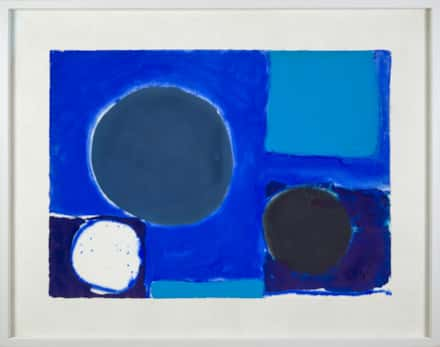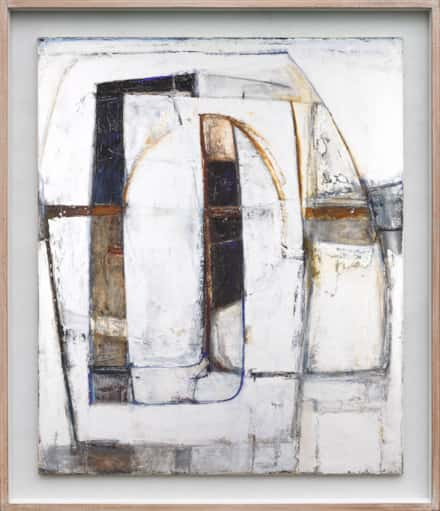William Turnbull
(1922 - 2012)
Venus, 1980
P1154
Venus, 1980
Bronze with grey green patina on a York stone base
signed with monogram, numbered, dated and stamped with foundry mark ‘4/9 80’ (at the base)
Cast by Livingstone Art Founders
Height: 15 in (38cm), Width: 7.5 in (19cm), Depth: 3.9 in (10cm)
LITERATURE
Exhibition catalogue, William Turnbull: Sculpture 1979-1980, London, Waddington Galleries, 198, p.13, another cast illustrated.
Exhibition catalogue, William Turnbull, Luxembourg, Galerie Kutter, 1983, n.p., exhibition not numbered, another cast illustrated.
A.A. Davidson, The Sculpture of William Turnbull, Much Hadham, 2005, p. 152, no. 199, another cast illustrated.
EXHIBITION
London, Waddington Galleries, William Turnbull: Sculpture 1979-1980, March 1981, no. 13, another cast exhibited.
Luxembourg, Galerie Kutter, William Turnbull, October - November 1983, exhibition not numbered, another cast exhibited.
Singapore, National Museum Art Gallery, William Turnbull: An Exhibition of Recent Sculpture and Original Prints, September - October 1984, exhibition not numbered, another cast exhibited.
ARTIST'S BIOGRAPHY
William Turnbull (b. 1922, Dundee, Scotland; d. 2012, London, England) was a Scottish sculptor and painter. He is known for figurative and minimalist sculpture, as well as abstract painting. Turnbull moved to Paris in the late 1940s. There he met Brancusi and Giacometti whose influence remained with him when he returned to London in 1950. Turnbull became a key member of the ‘Independent Group’ of artists, writers, and architects working at the ICA, which included Richard Hamilton and Eduardo Paolozzi. By focusing art on the realities of the modern world, the ‘Independent Group’ was a major influence on British Pop Art. In his sculpture, Turnbull forges a tension between balance, movement and stillness, informed by his time as an RAF pilot in the Indian subcontinent during the war. The experience of flying, ‘primitive’ art, ancient Greek sculpture and other sources greatly shaped Turnbull’s desire to locate, form and transmit elemental energy through his work. In Britain, Turnbull personifies the post-war break with academic tradition and romanticism; henceforth art could draw on direct expression, popular culture and ancient references.
YOU MAY ALSO LIKE
William Turnbull
Venus, 1980






 PRINT
PRINT SHARE
SHARE


